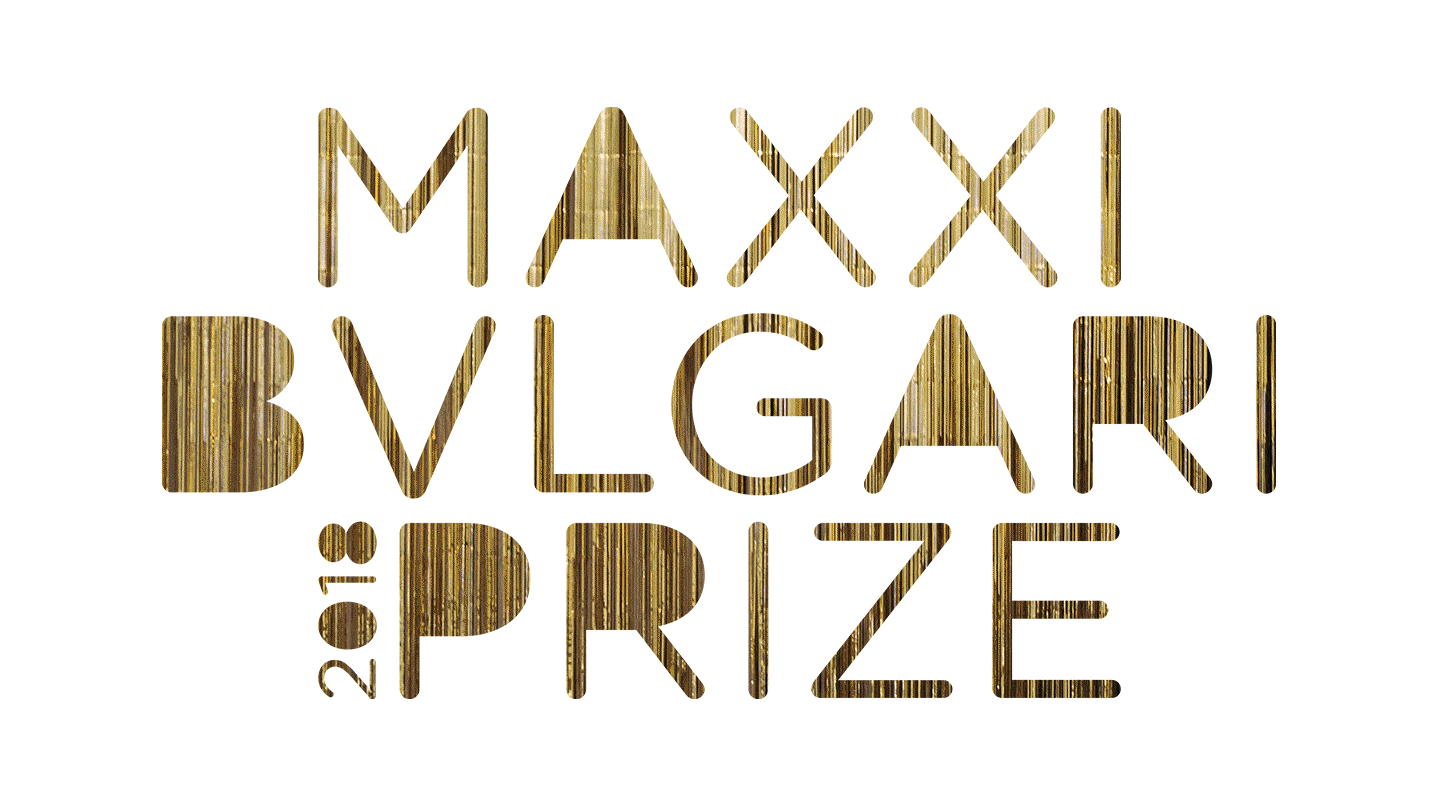Via Guido Reni, 4/a
00196 Roma Italy
Italy
Hours: Tuesday–Sunday 11am–7pm
T +39 06 32486
press@fondazionemaxxi.it
Talia Chetrit, Invernomuto and Diego Marcon are the three finalists of the MAXXI BVLGARI Prize, the museum’s project dedicated to supporting and promoting young artists. The prize, thanks to the partnership with Bulgari, has gained strength and has extended its scope to the international arena.
Last 3 October, at the Bulgari Hotel in London, the partnership, the prize and the finalists were presented by Giovanna Melandri, President of the Fondazione MAXXI, and Nicola Bulgari, Vice President of the Bulgari Group, a great supporter of the MAXXI BVLGARI Prize, as well as a passionate art collector and patron.
Conversations between MAXXI, the first Italian national museum dedicated to contemporary creativity, and Bulgari, for over 130 years an emblem of creativity and excellence, were first established in 2014, on the occasion of the exhibition Bellissima. The Italy of high fashion 1945-1968, of which the maison was the main partner. With the MAXXI BVLGARI Prize this partnership—based on shared values such as memory, innovation, passion, creativity and experimentation and on an awareness of the importance of support for culture and the strategic role of the public-private alliance—is being consolidated. As Giovanna Melandri and Jean Christophe Babin, Bulgari CEO, jointly agree, “supporting young talents means investing in the creativity of our time and our future.”
MAXXI BVLGARI Prize 2018: the finalists
The MAXXI BVLGARI Prize is a major project supporting and promoting young artists. It represents a continuation as well as the evolution of the Premio MAXXI, responsible for the founding nucleus of the museum collection and a springboard for young art talent. Thanks to the extraordinary partnership with Bulgari, the prize now enjoys renewed vigour and has expanded its horizons with the objective of promoting and valorising not just Italian artists but also those foreign artists who over the last two years have produced a new project in Italy within the ambit of public institutions and private situations.
The jury members—Bartolomeo Pietromarchi, Director of MAXXI Arte, David Elliott, independent curator, Yuko Hasegawa, Artistic Director at MOT in Tokyo, and Hans Ulrich Obrist, Artistic Director at the Serpentine Galleries in London—were unanimous in selecting as the finalists in the 2018 edition Talia Chetrit, Invernomuto and Diego Marcon, as they “have all demonstrated a clear understanding of the historical moment in which we are living and a capacity for expanding the confines of the artistic idiom.”
Talia Chetrit (Washington, D.C., 1982, lives and works in New York), was chosen “for her ability to reinvent the use of photography mixing past and present languages in her interpretation of relationships between the body, the gaze and identity”. She was proposed by Luca Lo Pinto, a curator at the Kunsthalle Wien and founder of the magazine and publishing company Nero, who writes: “Chetrit’s visual style alludes both to art history and commercial photography with references to the history of still lifes and the objectified representation of women within the first avant-garde movements. In her latest work, she has realized series in which she uses her body to undermine the conventions of self-portraiture and its mechanisms of control.”
Invernomuto was born in 2003 out of the collaboration between Simone Bertuzzi (1983) and Simone Trabucchi (1982). The duo lives and works between Vernasca (PC) and Milan and was chosen by the jury “for its ongoing interrogations of global social and political issues filtered through a local imagery influenced by both pop and sub-cultures which makes their work personal and sincere.” As Luca Lo Pinto who proposed the duo writes: “They developed an approach which avoids the use of a single language or medium. Their practice suggests an expanded notion of art which can embrace sculptures, artefacts, music, performances, films where the boundaries are constantly renegotiated.”
Diego Marcon (Busto Arsizio, Varese, 1985, lives and works in Paris) was chosen “for taking an original, poetic approach to experimentation with audiovisual technology and cinematic genres and critical review of historical sites.” He was proposed by Edoardo Bonaspetti, director and founder of the magazine, publishing house and agency Mousse, who writes: “The work of Diego Marcon focuses on the moving image, exploring the evocative potential of what is not immediately visible. Themes that recur within this creative framework include sleep, boredom, and time conceived as circular, stretching toward infinity.”
The site-specific works by the short-listed artists will be exhibited at MAXXI from May 2018 in an exhibition curated by Giulia Ferracci. In October 2018, the jury will designate the winner whose work will be acquired by the museum.
History of the prize
Created in 2000 as the Premio per la Giovane Arte, the prize represents the point of departure and the birth of MAXXI Arte collection. Over the years it has been an important springboard for many artists. Between 2000 and 2016 no less than 39 have taken part in the eight editions and include Mario Airò, Yuri Ancarani, Stefano Arienti, Rosa Barba, Massimo Bartolini, Vanessa Beecroft, Rossella Biscotti, Bruna Esposito, Lara Favaretto, Piero Golia, Avish Khebrehzadeh, Liliana Moro, Marinella Senatore, Nico Vascellari, Vedovamazzei and Francesco Vezzoli among many others.
In 2017, two of the three artists selected by Cecilia Alemani for the Italian Pavilion at the Venice Biennale were Giorgio Andreotta Calò, winner of the Premio MAXXI 2012, and Adelita Husni-Bey, one of the four finalists for the Premio MAXXI 2016.


